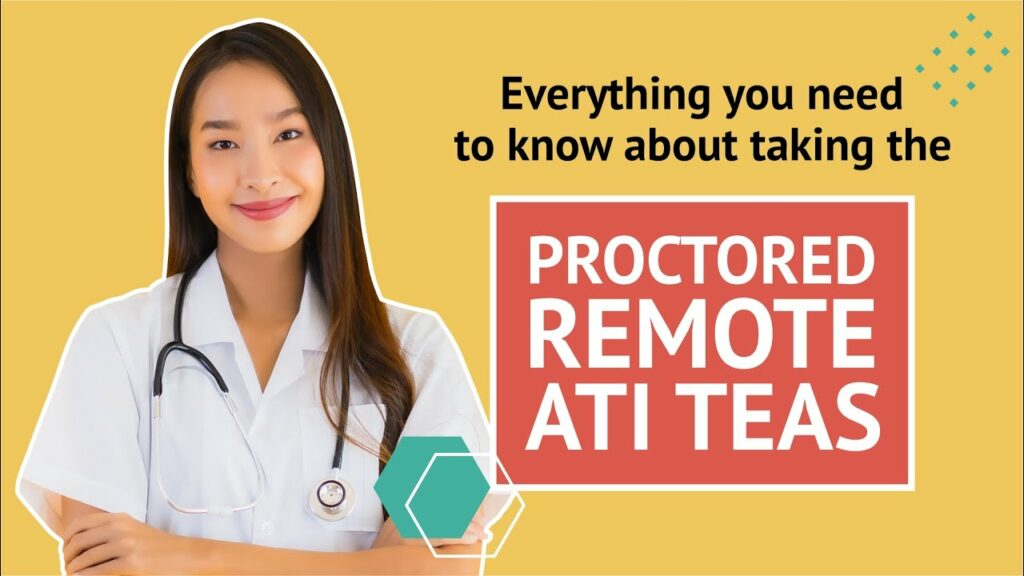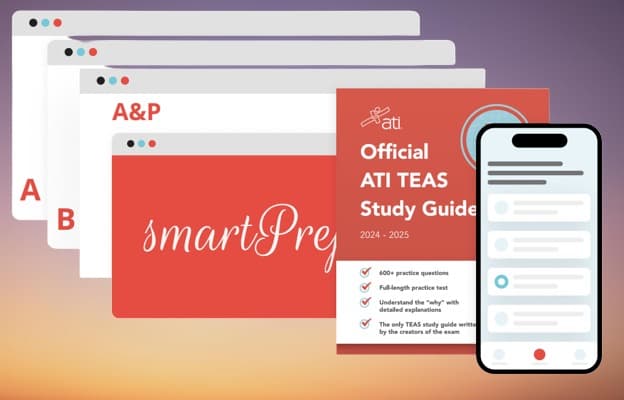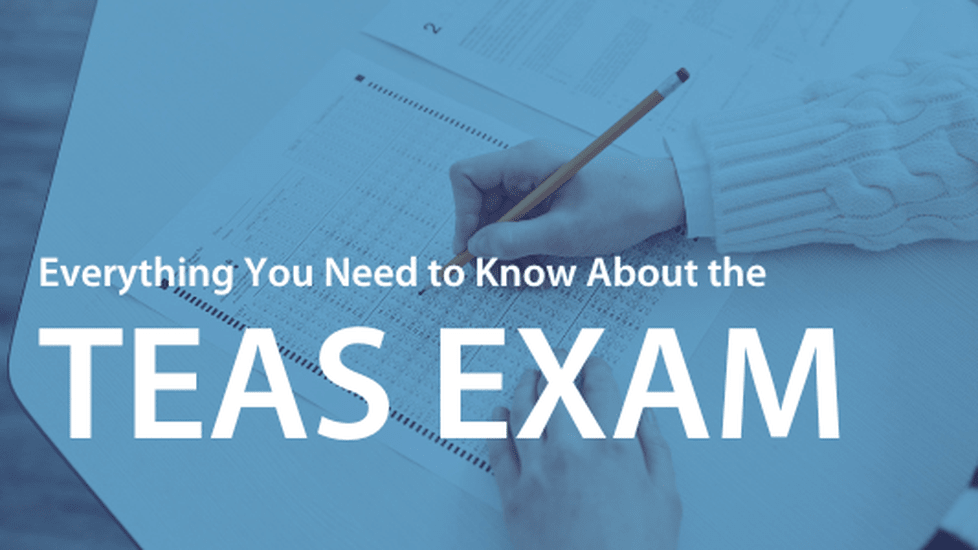Introduction
Remote proctored TEAS tests require secure exam settings, such as screen recording, audio, and visual. Preparing early enough ensures you familiarize yourself with these things and settings, giving you an easy time during the exam.
How To Navigate Online Proctoring
Online proctoring means invigilating a test remotely while ensuring exam security and integrity. The process entails using technology to monitor the students via screen recording, microphones, and a webcam. Students must understand all the guidelines and expectations to be safe during the exam.
1. Steps Involved In Online Proctoring
- Candidate login and system checks
- The student initiates the proctored session.
- Verification of candidate’s ID and workplace.
- Release of the exam to the candidate.
- The candidate begins the exam.
- The student minimizes the proctoring window.
- The student completes the test and the proctored session ends.
2. Understand Proctoring Guidelines And Instructions
The primary expectation for the proctored online TEAS test is that students meet all the minimum computer requirements and maintain a distraction-free and quiet testing environment.
They should also avoid using any unauthorized electronic devices or other materials. Aspirants should ensure their laptop or computer is fully charged before starting the exam or plugged into a power socket. Below are more guidelines to adhere to:
- No other individual may enter the room while you are taking the proctored exam.
- The space’s illumination must be sufficiently bright to be considered “daylight” quality. Overhead illumination is preferable. If overhead lighting is unavailable, the light source should not be behind you.
- It would be best if you sat at a clean desk or table.
- There should be no writing on your desk or the walls around you.
- The room should be as silent as possible. Sounds like music or television is not permitted.
- The following objects must not be on your desk or used during your proctored exam unless specifically permitted by the exam’s listed rules: books, supplies such as paper, pens, calculators, textbooks, notebooks, and phones.

3. Best Practices for Remote TEAS Exam
Some of the best practices for the remote TEAS exam include:
- Time management is a crucial skill that many students fail to look into. Managing your time wisely could be the reason for your success in the TEAS exam. Ensure you create a study schedule, develop a test-taking strategy, and practice using sample exams. During the exam day, wake up early and prepare accordingly to be fully settled a few hours before the exam. When handling the test, begin with the easy questions and return to the challenging ones later to save time.
- Dealing with technical glitches – First, you must run a system diagnostic check before the exam to ensure everything works. However, if a glitch occurs, calm down and handle it calmly to avoid unnecessary stress.
Check your internet connection. Is it stable? Does it meet the minimum speed requirements? Consider restarting or refreshing the browser to solve temporary glitches if it is okay. If the issue persists, you could contact support and document the problem.
- Handling test anxiety in remote testing: Most students are anxious during an exam because they are probably unprepared. To prepare fully for the remote TEAS exam, do as many mock exams as possible in the exact test setting to be confident of your ability.
Ensure you find a peaceful, quiet environment with good lighting for the TEAS test. Perform a dry run on your computer to ensure everything works perfectly. Avoid distractions during the exam to have an easy and less anxious time.
Understand the Remote TEAS Exam
The remote TEAS exam is a proctored assessment offered by an institution or ATI that allows students to take exams at approved locations or home. ATI, in partnership with Proctorio, makes this type of exam possible.
The platform utilizes machine learning to proctor students from different locations and uphold exam integrity. The test covers the four major areas: Mathematics, Science, English and Language usage, and Reading. There is no difference with the typical TEAS exam; you only take this one at home and not at school.
The transition to remote testing was driven by the need for convenience and flexibility in TEAS testing, especially during the COVID-19 pandemic. Remote proctoring is more comfortable for some students who would love to take the exam in a familiar environment. However, they must prepare adequately for the test day. Aspirants must conduct a dry run, which entails testing the webcam, microphone, internet connection, and computer to ensure they work perfectly.
Students should also check the proctor’s technical requirements for taking the exam. These include a PC or MAC with specific operating system versions and minimum resolutions, disabling popup blockers, using Google Chrome as the browser, enabling cookies and JavaScript, having an internet speed of at least 0.5-1 Mbps, having a webcam and microphone, and having administrator rights to install Respondus LockDown Browser. The exam must be in a well-lit room with a room scan to show the surrounding environment.
Preparing for the Remote TEAS Test
The first thing to do is familiarize yourself with the established remote testing guidelines provided by the proctor. These rules and regulations will be your outline for the remote test, including everything required. They will stipulate the type of internet connection you need, how your surrounding environment should be, and what items you should have around you.
The next step is setting up your remote TEAS exam environment. You need to find a quiet place or room that is well-lit and free of distractions. As stipulated by the TEAS remote exam guidelines, all the required materials for the exam should be within your reach.
Technical checking is another crucial aspect when preparing for a remote TEAS test. It entails checking whether your computer meets the minimum system requirements, including your internet speed, microphone, RAM, and working webcam.
After that, you can perform a dry run to ensure every item works properly just before the exam. The other crucial step in your preparation for the TEAS exam is practice runs and mock exams. These practice sessions help aspirants familiarize themselves with the types of questions to expect, the format, and the timing. If you do several mock exams during the preparation, you will feel more confident and prepared to tackle the exam.
Post-test Considerations
After completing your remote TEAS exam, it is advisable to consider specific post-test considerations. Start by reviewing your performance and looking for areas to improve. The results will be in your ATI account, with a detailed performance breakdown. If you encounter technical issues while taking the exam, report to your proctoring service or testing center to address them and receive your results.
If you fail to achieve the desired results in the exam, you can always prepare for the future. Start seeking resources and support as you prepare to retake the remote TEAS exam. Practice tests, study guides, and online courses will help sharpen your skills and improve your chances of success. Ensure you only work with study materials from reputable sources, as they are more reliable.
Remember all the rules and guidelines when preparing for the remote TEAS test. Although an in-person individual does not monitor the test, it is prudent to follow all the rules since the proctor is still monitoring you from afar.
Before the exam day, ensure you prepare adequately and have all the required materials, such as a robust internet speed, a fully charged computer or laptop with a microphone and webcam, and a quiet environment.
Remember to do a dry run on your system just before the exam to ensure everything is in check and working. Remember, this is the typical TEAS test, so panic is unnecessary. Relax and apply all the knowledge you gathered while preparing. All the best!




